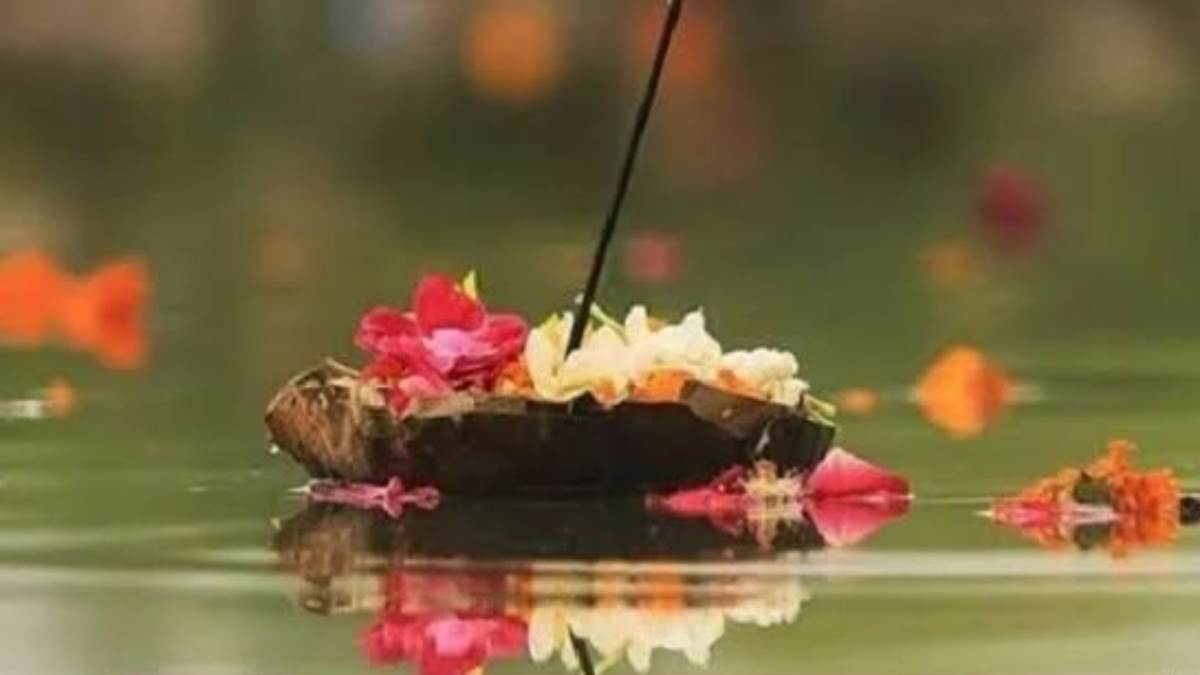Navratri
Sep 30, 2025Navratri– The Festival of Divine Power and Devotion

Pitru Tarpan in Shraddh Paksha: Honoring Our Ancestors
Introduction
In Sanatan Dharma, the relationship between ancestors (Pitru) and descendants is considered eternal. Shraddh Paksha, also known as Pitru Paksha, is a sacred period dedicated to remembering and honoring our forefathers. During these 16 days, rituals like Tarpan, Pind Daan, and Shraddh are performed with devotion to seek blessings from ancestors and to ensure peace for their souls.
One of the most important rituals in this period is Pitru Tarpan. It is an act of offering water mixed with black sesame seeds, barley, and kush grass while chanting mantras. This ritual symbolizes gratitude, remembrance, and the fulfillment of duties towards our lineage.
What is Pitru Tarpan?
• Tarpan comes from the Sanskrit word “Trup”, meaning to satisfy.
• By offering water and prayers, we express gratitude and satisfy the souls of our ancestors.
• Pitru Tarpan is believed to connect us spiritually with those who came before us and opens the path of blessings for the family’s prosperity, health, and happiness.
Why is Pitru Tarpan Important in Shraddh Paksha?
1. Spiritual Gratitude – It is a way of thanking our ancestors for the life and heritage they gave us.
2. Removal of Pitru Dosh – Performing Tarpan helps to reduce or nullify Pitru Dosh (ancestral karmic imbalances).
3. Blessings for Growth – Ancestors’ blessings are believed to bring harmony, progress, and protection from obstacles.
4. Soul Elevation – It provides peace and helps ancestors attain higher spiritual realms.
When and How is Pitru Tarpan Done?
• Time: Pitru Paksha falls in the Krishna Paksha of Bhadrapada month (usually September–October).
• Day: Tarpan is performed especially on the Tithi (lunar day) corresponding to the ancestor’s death.
• Method:
1. The ritual is generally performed near a sacred river, pond, or water body.
2. A Pandit guides the process with Vedic mantras.
3. Water, black sesame, barley, kush grass, and flowers are offered with folded hands facing south.
4. Prayers are made for the peace and liberation of ancestral souls.
Who Should Perform Tarpan?
• Traditionally, the eldest son or male member of the family performs the ritual.
• However, in today’s times, women also perform Tarpan with full devotion if there is no male member present.
• The important factor is faith and intention rather than who performs it.
Benefits of Performing Pitru Tarpan
• Family harmony and unity.
• Relief from obstacles in career, marriage, and health.
• Spiritual upliftment and positive energy in the home.
• A sense of fulfillment in carrying forward family traditions.
Conclusion
Pitru Tarpan in Shraddh Paksha is not just a ritual—it is a sacred responsibility. By remembering our ancestors with love and respect, we strengthen the roots of our family tree and invite divine blessings. Performing Tarpan with devotion ensures that the chain of gratitude, faith, and dharma continues across generations.
🙏 May our ancestors bless us with wisdom, prosperity, and peace.
Navratri– The Festival of Divine Power and Devotion
Pitru Tarpan in Shraddh Paksha: Honoring Our AncestorsIntroductionIn Sanatan Dharma, the relationship between ancestors (Pitru) and descendants is con...
🌊 The Story of King Bhagirath and the Descent of River GangaIndia’s spiritual tradition is full of inspiring legends, but a few are more than just my...
The Divine Festival of Nabakalebara – A Renewal of Lord Jagannath’s BodyIn the sacred land of Purushottam Kshetra (Puri), Lord Jagannath, who resides...